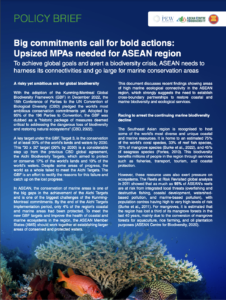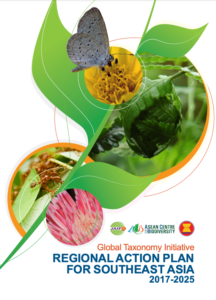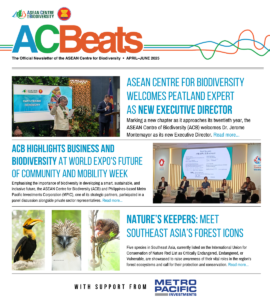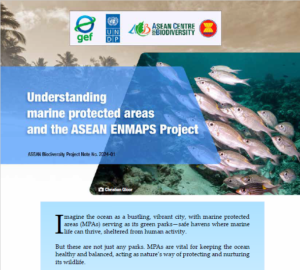How the ACB, through the Small Grants Programme (SGP I) and its grantees Aliansi Lestari Rimba Terpadu (ALeRT) and Yayasan Cakra Madani Selia (CAKRA), helped the transformation of tourism at the Pusat Latihan Gajah (Elephant Training Center) from mass to socialised tourism.
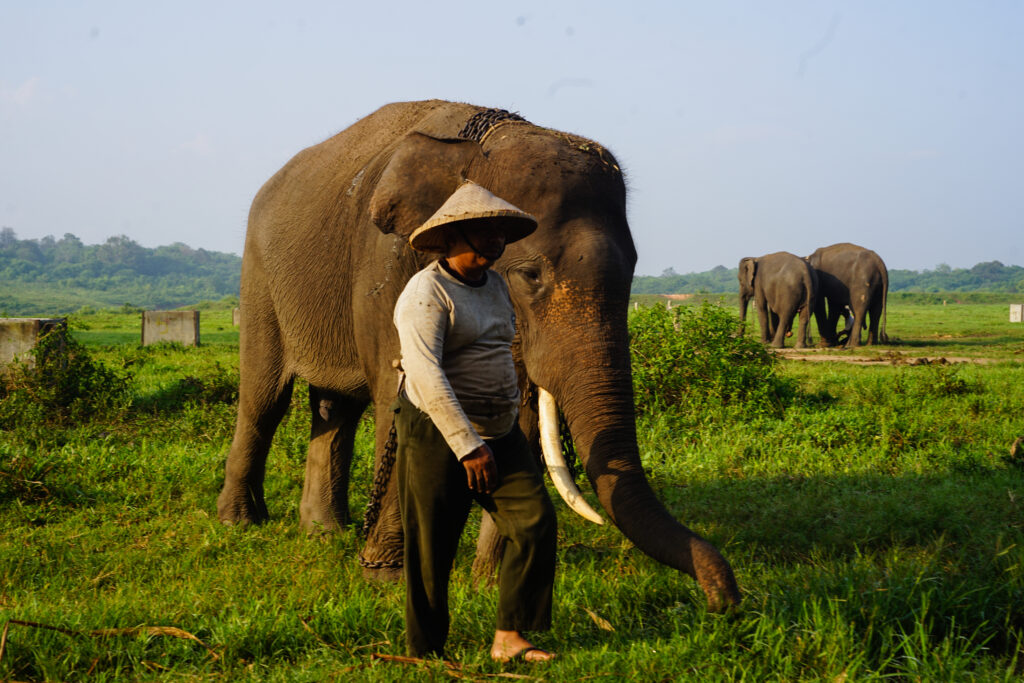
An elephant and its mahout at the Elephant Lecture Center in Way Kambas National Park
Established in 1985, the Pusat Latihan Gajah (PLG) or Elephant Training Center, has long been a sanctuary for rescued and captured elephants in Way Kambas. After a brief hiatus during the COVID-19 pandemic, the centre re-emerged in 2022 with a fresh identity as the Pusat Lektur Gajah (Elephant Lecture Center). This rebranding signifies its expanded mission: not only to train elephants but also to serve as a pivotal hub for reducing human-wildlife conflicts and championing wildlife conservation through a wealth of information and activities.
The rebranding marked a significant shift—from mass ecotourism to socialised ecotourism. While mass ecotourism aims to attract large crowds to natural destinations to stimulate local economies, it often risks environmental and cultural degradation. In contrast, socialised ecotourism emphasises scheduling smaller groups and nurturing meaningful connections with local cultures and environments.
“The PLG was a popular tourist destination in Lampung, attracting 50,000 visitors every year. The former PLG offered elephant attractions and shows,” shared the Penabulu Foundation in its final report to SGP. According to the organisation, a new ecotourism concept was introduced by the SGP grantees Yayasan Cakra Madani Selia (CAKRA) and Aliansi Lestari Rimba Terpadu (ALeRT) to PLG, prioritising animal welfare and the active engagement of buffer zone villages of the WKNP in developing sustainable ecotourism.
At the core of this change is limiting visitors that can have a direct impact on the welfare of elephants in PLG, preserving the elephants’ habitat, and promoting the development of village tourism in WKNP.
“In December 2023, PLG reopened its tourism activities with a new concept: Visitors shouldn’t see elephants as attractions like those in a circus. Close encounters and elephant rides were discontinued. This is a good move because with the new concept, elephants are no longer stressed from the hordes of visitors who come into direct contact with them. Now, visitors can appreciate the elephants from a safe and respectful distance. Even the trash and the noise were significantly reduced,” shared Esti Anggraini, an elephant veterinarian at the PLG.
This shift also entailed recalibrating the centre’s strategies to earn income. Instead of the elephant shows, tourists can feed and bathe the elephant and pose for a photo for a corresponding fee.
They can also join jungle track tours with the elephants to experience nature more closely, while in the late afternoon, they can enjoy the beautiful sunset scenery at the PLG as they enjoy scrumptious food prepared by the PLG’s partner cooperative.
The progress made by PLG would not be possible if not because of the joint efforts of the government and dedicated organisations like CAKRA and ALeRT in crafting conservation based nature tourism master plan and information campaign materials that served as the former’s blueprint and toolkits in implementing the socialised ecotourism. To develop the master plan, CAKRA employed various data collection techniques to consult various stakeholders that have an involvement in the plan. Among the key recommendations identified were establishing cooperatives, securing business licences, preparing tourism infrastructure, and developing integrated tourism management.
“Integration between WKNP, PLG, Way Kanan, and the buffer villages is central to this approach, fostering a cohesive and sustainable tourism model,” CAKRA noted in its project completion report.
Meanwhile, ALeRT focused on orienting the WKNP staff and the four buffer villages of Braja Harjosari, Labuhan Ratu VI, VII, and IX to the new ecotourism concept and their role in ensuring its implementation and success. The organisation designed and distributed socialisation tools like films, banners, and flyers, and organised face- to-face discussions. “Efforts to organise PLG tourism sustainably not only focus on conserving biodiversity to enhance the destination’s attractiveness but also aim to increase community participation in tourism management, boost the local economy, and improve education and public health,” ALeRT stated in its project completion report.

The interior and exterior portions of the redesigned PLG visitor centre feature new information materials which help tourists learn more about the Sumatran elephants and other WKNP key species such as Sumatran tigers, Sumatran rhinoceros, and orangutans
While the shift led to a decline in the number of park visitors, organising the tours in smaller groups now allows visitors to develop a deeper connection with nature in an environment that protects elephant welfare and promotes sustainable income generation for the surrounding communities.









